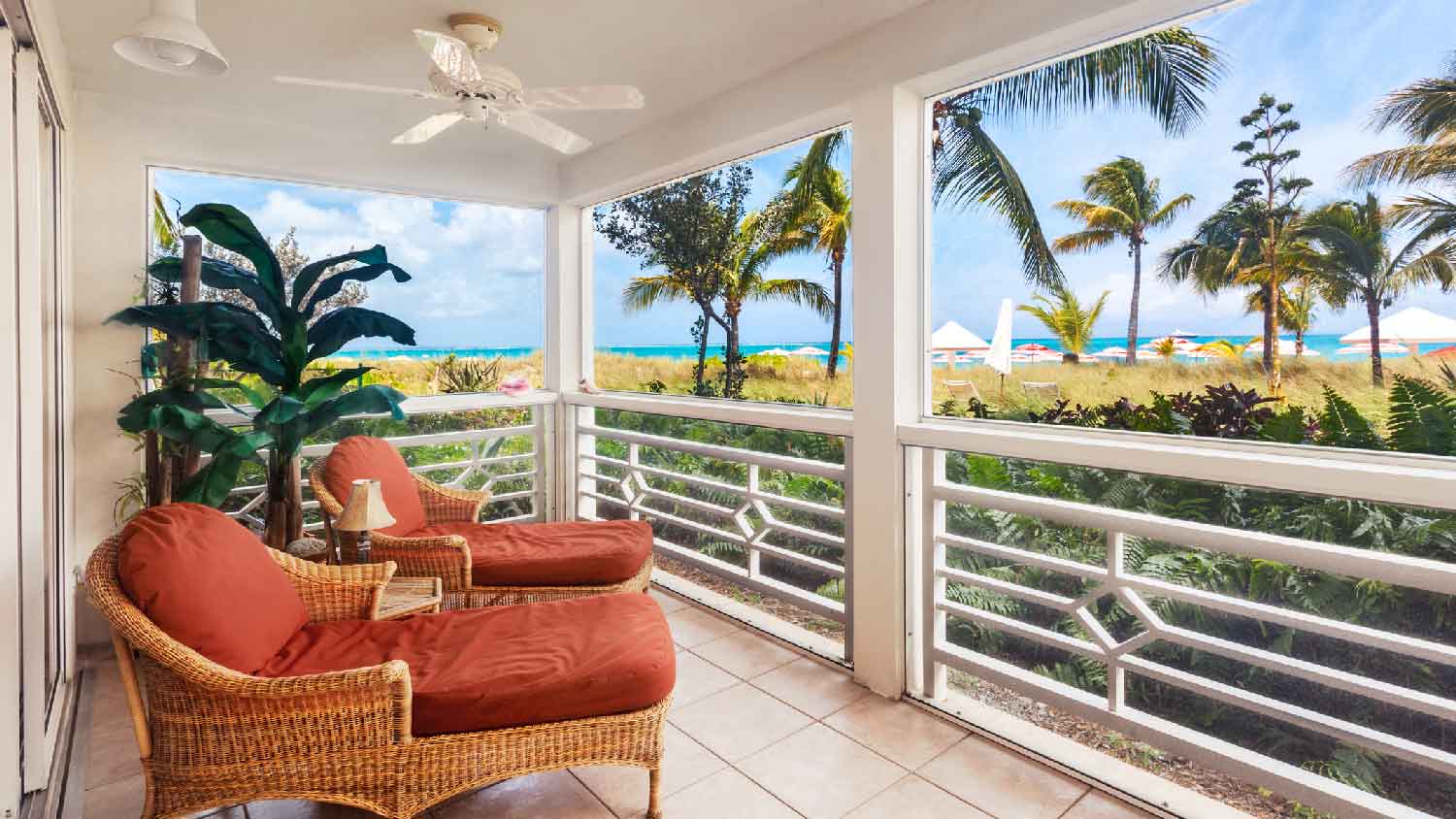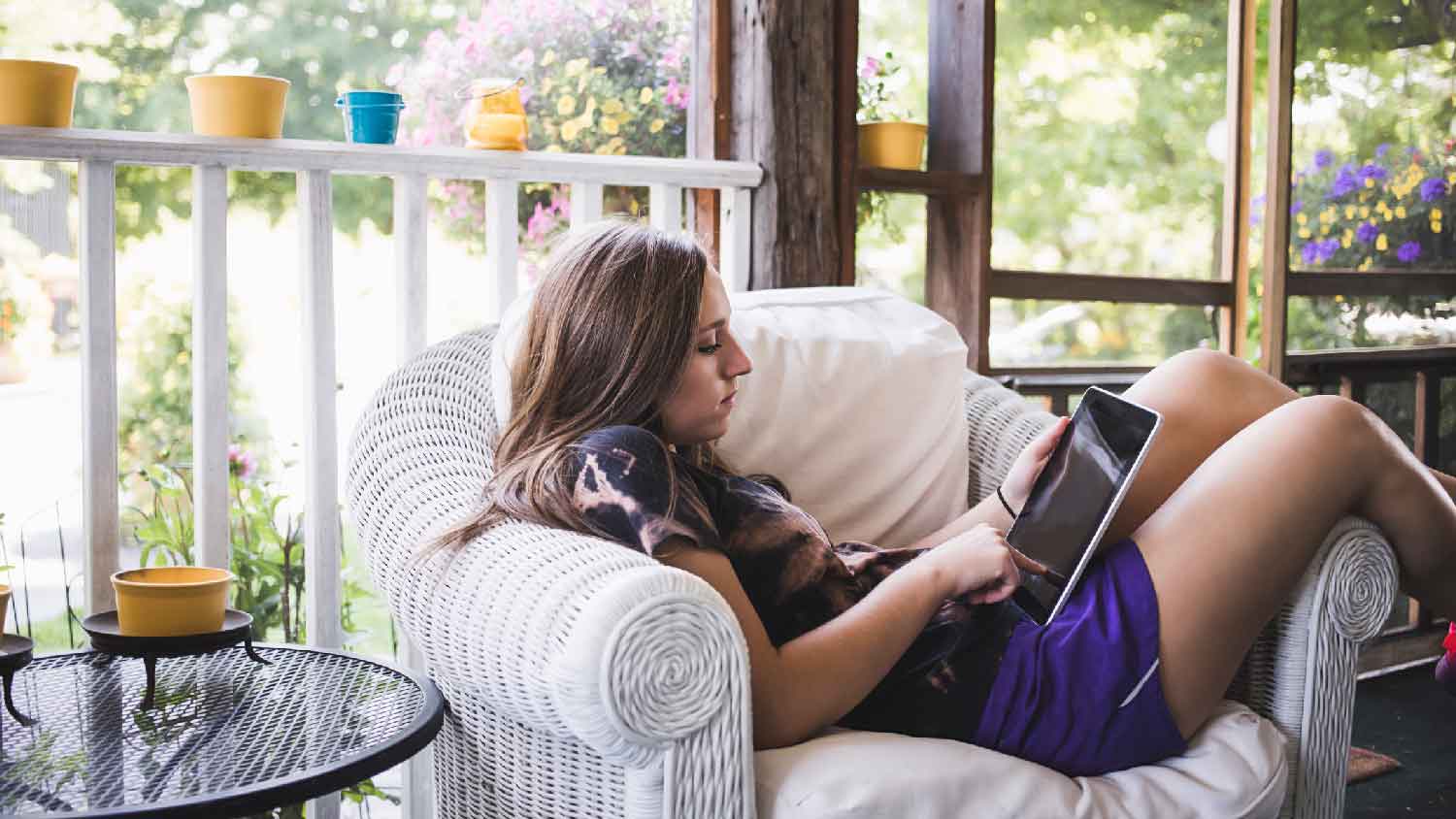Screened-In Porch vs. 3-Season Room: Pros, Cons, and Costs
It’s the perfect season to compare these outdoor builds


You can use a 3-season room for most of the year.
A screened-in porch is only useful in mild weather.
3-season rooms cost more on average than a screened-in porch.
Do you want to enjoy the great outdoors without actually being outdoors? A screened-in porch or 3-season room could be the answer.
At first glance, these two sunny spaces may look similar, but there are some significant differences when it comes to price and usability. We’ll break down the differences, benefits, and costs of screened-in porches versus 3-season rooms.
Screened-In Porch vs 3-Season Room: Key Differences

The main difference between a screened-in porch versus a 3-season room is versatility. A screened-in porch offers protection from the elements with a roof, but the screened walls provide an outdoor feeling inside. A 3-season room has the added benefit of glass windows to seal off the room in inclement weather.
What Is a Screened-In Porch?
A screened-in porch combines the comfort of being inside with the benefit of fresh air. It has an overhead roof and screened walls to keep bugs at bay. Depending on your climate and budget, different types of screens can meet various needs.
| Pros | Cons |
|---|---|
| Affordable | Not usable in extreme temperatures |
| Good for entertaining | Requires maintenance |
| Protection from the elements | Doesn’t add liveable square footage |
Best for:
Milder climates.
Homes with existing decks.
Homeowners seeking a low-cost entertainment space.
Pros of a Screened-In Porch
One of the benefits of a screened-in deck is that it provides outdoor entertaining space with protection from the elements, making it a compromise between staying inside and venturing outdoors.
Another perk is that screened-in porches are often less expensive than 3-season rooms. Building a screened-in porch costs $2,800 on average if you have an existing deck. However, if you need to build an entirely new porch structure, you’ll pay around $11,000 depending on the size.
Cons of a Screened-In Porch
Although a screened-in porch provides a roof over your head, the screen walls make the space seasonal. You most likely won’t want to spend time in it during very hot or cold weather.
Additionally, since the space is partially exposed to the elements, it’ll require more regular maintenance than an indoor room. For instance, you’ll need to regularly clean the screens and patch any holes.
Finally, a screened-in porch will add value to your home, but the feature doesn’t technically increase its liveable square footage.
What Is a 3-Season Room?

A 3-season sunroom has a roof and is enclosed with glass instead of screens. Some may feature windows that run from the floor to the ceiling, allowing you to view the outside.
As the name implies, a 3-season room can be enjoyed for three out of the four seasons. It’s not connected to your home’s HVAC system, so there’s no temperature control. If you live in a hot climate, you’ll likely spend time in a 3-season room during the fall, winter, and spring. If you live in a colder region, your 3-season room will be most comfortable during the spring, summer, and fall.
| Pros | Cons |
|---|---|
| Usable 3-seasons of the year | No temperature control |
| Great for entertaining | More expensive |
| Multi-use space | Can’t be used all year |
Best for:
Homeowners looking for flexible entertaining space.
Homeowners with a bigger budget.
Pros of a 3-Season Room
A 3-season room can transition between an indoor and outdoor space seamlessly, making it a flexible space to entertain, eat, or relax most of the year. You have the option of opening the windows to get the fresh-air benefits of a screened-in porch, but don’t have to worry about the high-maintenance that comes with taking care of large screen panels.
Cons of a 3-Season Room
Adding a 3-season room can be expensive because of the cost of glass and window framing. Another drawback is that you can’t use these rooms year-round because they’re not temperature-controlled.
Screened-In Porch vs. 3-Season Room

There are a few factors to consider when debating between a screened-in porch versus a 3-season room. Here’s what to keep in mind when weighing the options.
Options and Customizations: 3-Season Room
While screened-in porches have a variety of screens to choose from, the additional build required for a 3-season room involves more opportunity to customize. Whether that’s the style of sliding windows or the installed electric throughout, there are more options to choose from when building a 3-season room.
Price: Screened-In Porch
The cost to enclose a porch with screens alone will be a fraction of the cost of a 3-season room. This is because screen paneling is far less expensive than floor-to-ceiling glass or adding a few glass windows.
Durability: 3-Season Room
Both screened-in porches and 3-season rooms require more maintenance than traditional rooms, but because the 3-season room can be sealed off, it’s more durable in the long run. When the season changes, you can protect the decor by closing the windows to avoid damage to furniture, walls, and flooring..
Ease of Installation/DIYability: Screened-In Porch
A screened-in porch is a simpler build than a 3-season room. If your home has an existing porch, adding screens is a manageable project for an advanced DIY-er. However, if you need to add a roof to an existing porch to create a screened-in porch, it’s best to call a sunroom contractor near you. The same goes for building a 3-season room from scratch.
ROI and/or Resale Value: 3-Season Room
A well-executed screened-in porch or 3-season room will add value to your property. However, a 3-season room will add more desirable square footage to the home since it’s more usable and features glass windows. This will likely boost your resale value more than a screened-in porch.





- Benefits and Problems With Screened-In Porches
- 23 Screened-in Porch Ideas to Enjoy the Outdoors (Without the Bugs)
- 8 Must-See Tips to Winterize a Screened Porch
- Sunroom vs. Screened Porch: Pros, Cons, and Costs
- Who Builds Screened-In Porches?
- What Is the Cost of a Porch? [2024 Data]
- 29 Back Porch Ideas
- What Is a Four Seasons Room? The Best Way To Live Your Indoor/Outdoor Dreams
- 32 Welcoming Covered Porch Ideas
- Porch vs. Deck: What’s the Difference?










